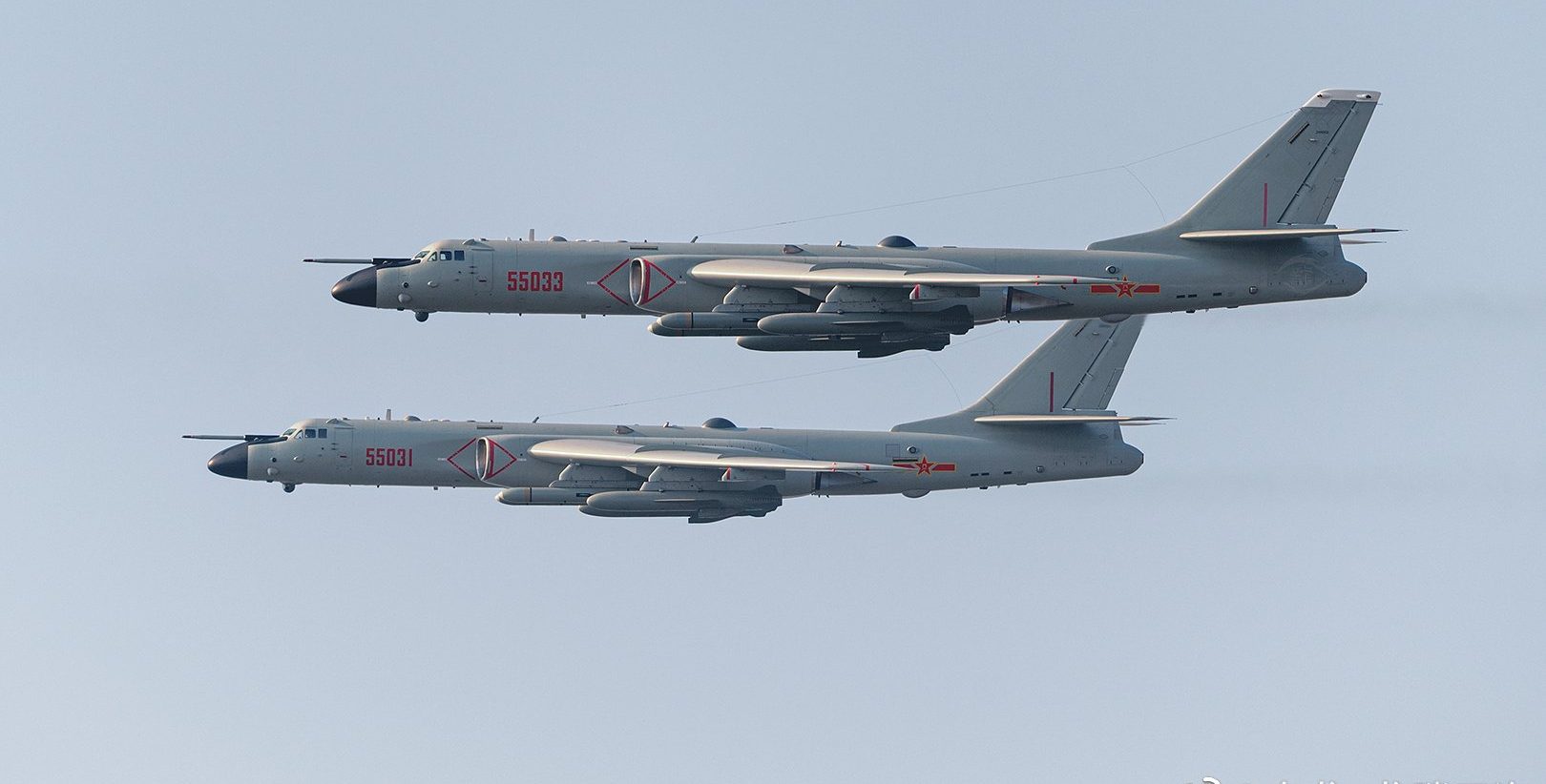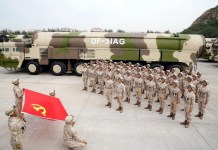China and Russia’s increased military bonhomie has been concerning to the West. Now, the two countries have demonstrated the capability to carry out joint strikes with their bombers “sharing intelligence,” indicating network centricity between their militaries.
In the latest joint combat patrol over the Sea of Japan, two of China’s nuclear-capable bombers, H-6N, were escorted by a Chinese J-17 fighter jet and a Russian Tu-95 bomber. Besides being the debut of the H-6N in joint patrol, the highlight of this edition was that the Chinese long-range strategic bomber shared data with the Russian bomber.
The networking between the two countries’ bombers over the Sea of Japan is seen as an effort to “intimidate” the US and its allies in the region with a joint show of long-range, multi-national strike capability.
An effective network between Russian and Chinese bombers, ensuring high-speed data exchange, processing, and sharing of targeting details over long ranges, will considerably increase their strike envelope. The faster intelligence sharing could also shorten the window to identify a target, thus making it difficult for air or ground forces to track the incoming bombers.
This was China and Russia’s 9th joint strategic air patrol, which saw the Chinese People’s Liberation Army (PLA) Air Force’s latest H-6N bombers on their maiden cruise mission over the Sea of Japan. The H-6N is capable of aerial refueling, significantly expanding the joint patrol’s deterrence and strike range scope.
According to the Pentagon’s China Military Power Report, the H-6 bomber is the jet that worries US defense planners most, highlighting its significant role in China’s military strategy.

The joint patrol started in 2019, aiming to effectively test and enhance the joint training and operating capabilities between the two countries’ air forces, the PLA Air Force said in a press release. The first joint patrol of 2024 was on July 25, when the two countries’ bombers flew over the Bering Sea.
The two militaries’ large-scale and high-frequency joint air patrols aim to practice their air forces’ rapid response and long-range operational capabilities. Besides proving their aircraft’s efficient combat readiness under real combat conditions, the joint patrol enhanced and reinforced “the intelligence sharing and collaborative combat capabilities between the two militaries.”
Experts see “intelligence sharing” between Russia and China through multi-level data exchange, which requires integrating data formats, transport layer interoperability, and establishing the interfaces, as an “unprecedented threat.”
It remains difficult to ascertain the degree of network centricity that the two countries have achieved. The Global Times, however, underscores the long range of the H-6N bomber, which can fly more than 2,000 miles without refueling. This certainly brings Japan, Taiwan, and even the Philippines within range of a bombing strike launched from the mainland.
The H-6N was first unveiled as a new type of long-range strategic bomber in the National Day military parade marking the 70th founding anniversary of the People’s Republic of China on October 1, 2019, the Xinhua News Agency reported. The Chinese home-made strategic bomber is capable of midair refueling and long-range strikes.
The H-6N bomber that flew the joint patrol mission is the latest variant of the nuclear-armed bomber. Since its unveiling, the H-6N has received upgrades in airborne weapons and equipment, making it the most advanced bomber in service in the PLAAF.
According to The Diplomat, the reshaped fuselage indicates that the H-6N can carry “air-launched ballistic missiles,” including the DF-21 anti-ship ballistic missile variant. A nuclear variant of the DF-21 greatly increases the bomber’s threat envelope.
The fielding of H-6N for the joint patrol indicates China’s commitment to fielding the latest weaponry to safeguard its strategic interests along the first island chain.
H-6N – From Cold War Relic To China’s Airborne Hammer
During the Joint-Sword 2024B exercises in October 2024, the H-6N bombers took center stage. Taiwan’s Ministry of National Defense reported detecting multiple groups of H-6s engaging in simulated attack drills, underscoring the bomber’s significance in China’s military posture towards the island.
The H-6 Bomber is a relic from the Cold War era. However, this old warbird has undergone upgrades, transforming it into a key piece in China’s military strategy. The Chinese bomber was designed as the Soviet Tupolev Tu-16. The H-6 bomber made its maiden flight in the 1960s and has been in service since then.
The H-6 family includes the H-6K, H-6J, and H-6N, and their deployment indicates that Beijing means business. China’s H-6N can carry a large, air-launched hypersonic missile. China’s hypersonic weapons capability is matched only by Russia—with America’s capacity lagging far behind the two countries.




